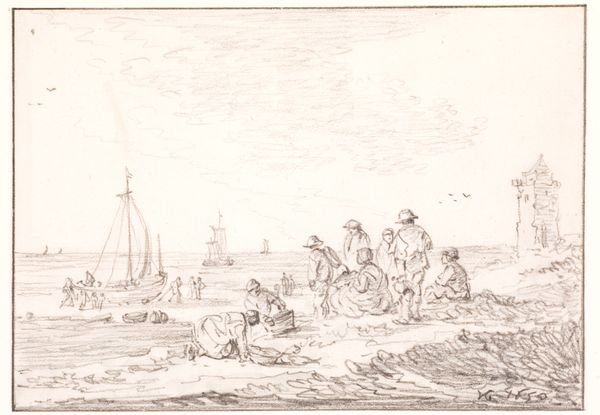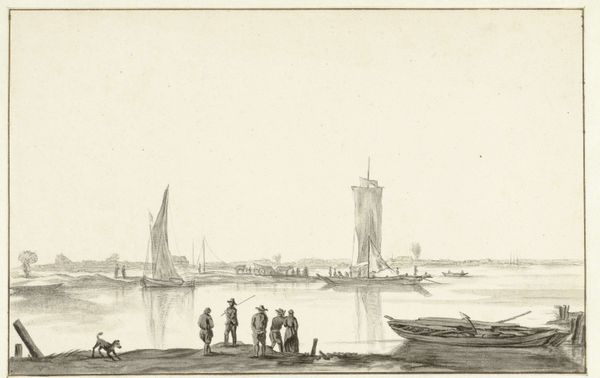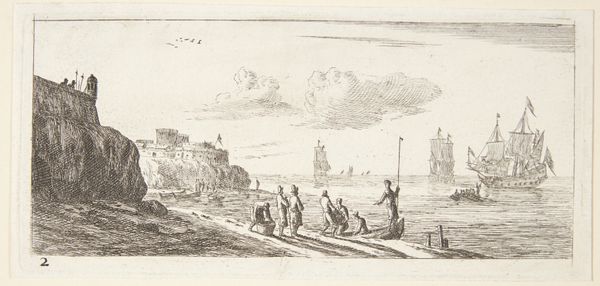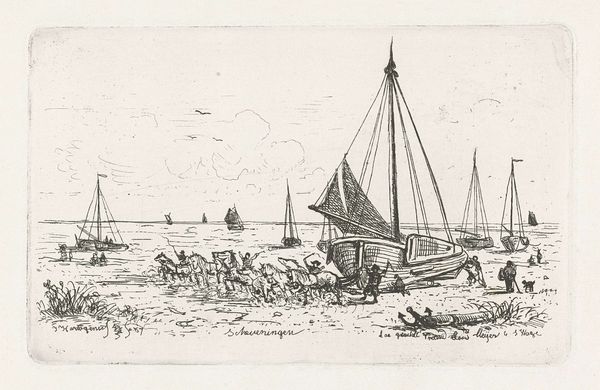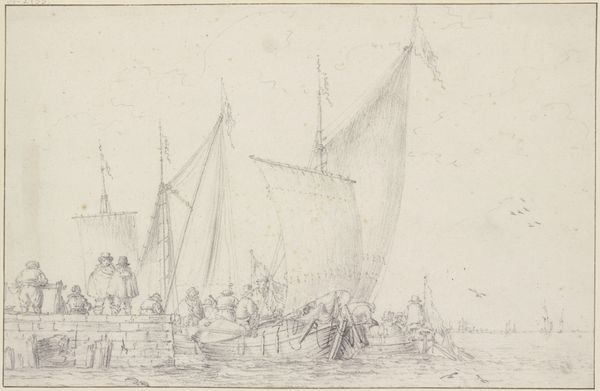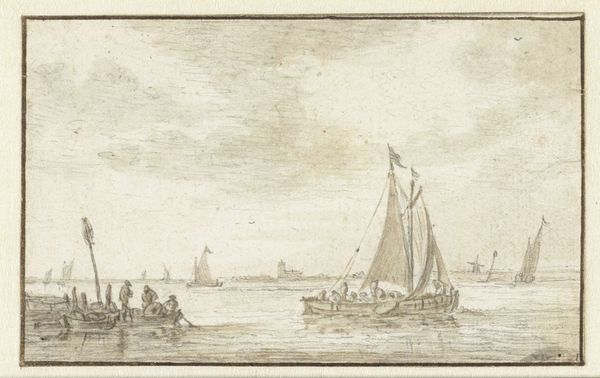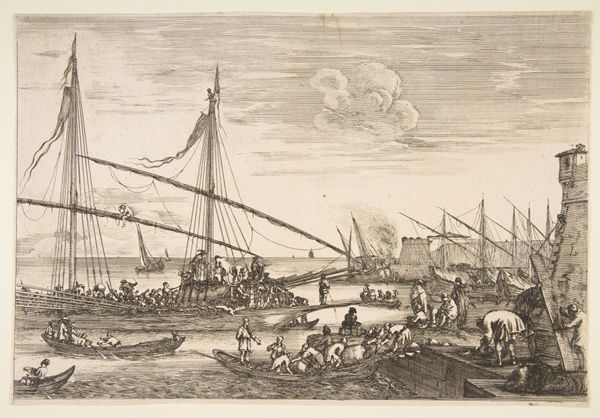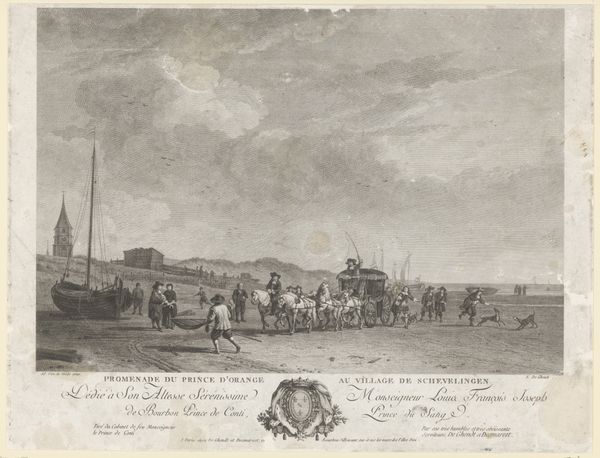
Meeresstrand, Pferde stehen bereit, ein Schiff auf das Land zu ziehen
0:00
0:00
drawing, paper, ink
#
drawing
#
landscape
#
paper
#
ink
#
15_18th-century
#
genre-painting
Copyright: Public Domain
Curator: Well, what's your initial take on this rather monochrome scene? It's titled *Meeresstrand, Pferde stehen bereit, ein Schiff auf das Land zu ziehen*. Editor: Strikingly stark. The limited palette accentuates the grit of manual labor; the sepia tones evoke a sense of history. It looks like really difficult work. Curator: Indeed. This ink drawing on paper, currently housed in the Städel Museum, is attributed to Paulus Constantijn la Fargue. Notice how the artist masterfully employs line to create depth and texture. Editor: The repetitive, almost rhythmic lines used for the water, in stark contrast to the comparatively static depiction of the horses, highlights a material tension between the human effort to master nature and nature’s unwavering presence. I wonder who was profiting from the horses and labor used here? Curator: A valid question, certainly adding another layer. From a purely structural perspective, I am particularly drawn to the triangular composition formed by the ship's mast and the figures. Editor: It really centers the artwork doesn't it, forcing you to see that a collaborative effort is at play to keep their community afloat—quite literally. Curator: I appreciate your reading of the ship being vital to this unnamed community! And on close inspection, consider how La Fargue renders light—the way it reflects on the water and subtly defines the forms of the horses and figures—creates an intriguing interplay of presence and absence. Editor: The treatment of light makes me think more about the working class involved. What time of day is it? Is this grueling labor performed throughout all hours? And how are they compensated? What are their lives outside of pulling this ship inland? The piece really sparks questions regarding working conditions and class dynamics that a wealthy patron may not have ever had to consider! Curator: An insightful analysis that truly bridges formal aspects with the broader context of labour. It offers an alternate interpretation, enriching our understanding of La Fargue's artwork. Editor: I find considering the process—the labour and resources behind an artwork—really enhances my overall reading of its effect!
Comments
No comments
Be the first to comment and join the conversation on the ultimate creative platform.

